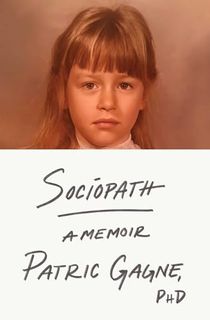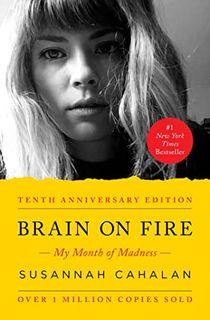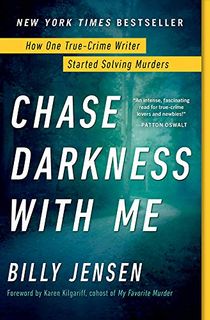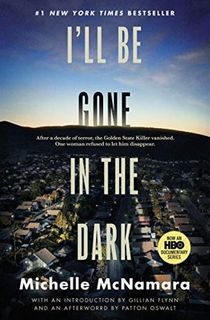Some of the most harrowing and heart-rending writing comes from that intersection of true crime and biography where the horror mounts from personal experience. These are books that take the darkest acts and inspect them from the inside out.
This is where horror and memoir merge. The mash-up of horror and memoir allows for a deeply introspective exploration of the nature of fear, trauma, and the unknown.
Through the lens of personal narrative, authors tell personal stories that delve into the psychological and existential dimensions of horror, confronting questions of mortality, identity, and the boundaries between reality and the supernatural.
Here are some of the best examples of horror and memoir blended together for terror that leaps off the page—and into reality.

Some People Need Killing: A Memoir of Murder in My Country
Some People Need Killing is an intense and exhaustive look at the horrible drug war in the Philippines. Author and journalist Patricia Evangelista spent six years on the frontlines of a caustic and complex war, there to report on the thousands of killings carried out by the police.
The result is an examination and real-world visualization of the horror at the center of sociopolitical violence and also acts as a testament to the courage of a journalist putting her own safety in the line of fire so that the horror of all the executions, stories typically brushed aside and underreported by most, can be heard.

Sociopath: A Memoir
Patric Gagne knew she was different from a young age. Like millions of people alive today, she is a sociopath. Though she battles apathy and the pressure to feel, and though her life has yielded crimes of its own, she does not resemble the romanticized image of the sociopath. She is not a serial killer or a monster.
Rather, in her illuminating memoir, Sociopath, she reveals how effectively she survives by being invisible. She's the kind of person who cherishes that veil, so she is never “found out”. The memoir goes to great lengths to chart Gagne’s life alongside the discoveries, both personal and professional, she’s made in understanding sociopathy.
The result is a memoir that will frighten and fascinate, and ultimately provide a window into the commonality of the sociopath and their own need to feel.

Brain on Fire: My Month of Madness
Adapted into the 2016 film of the same name, Susannah Cahalan’s Brain on Fire is a memoir that reads like abject terror. Cahalan moves to the city and starts her dream job as a writer for a prominent newspaper.
However, one day she finds herself in a hospital in a body fighting back and with a mind seemingly wiped clean of any memory of how she got there. Scary enough as it is, what happens next is heartbreaking and harrowing in every sense. Cahalan is diagnosed as psychotic, suffering from an illness that causes many to scratch their heads and come up with conjecture.
Yet throughout it all Cahalan is essentially alone, unable to even trust her own body and mind. Brain on Fire is one of the most vivid depictions of mental illness and America’s fractured medical industry.

First They Killed My Father: A Daughter of Cambodia Remembers
Loung Ung’s memoir, First They Killed My Father, is a candid and courageous memoir depicting the war crimes and carnage of the Cambodian genocide from the perspective of one of its survivors.
Ung was born into a family living in the country’s capital, Phnom Penh. The daughter of a government official, she experienced a privileged life until the Khmer Rouge army burst into the city, the beginnings of a horrific war. Fleeing like the rest of the city’s population, Ung was forced into the role of a soldier.
Her entire world torn apart and upturned, Ung’s memoir describes a brutal and shocking story of how political strife causes horrific effects on its people.

Chase Darkness with Me: How One True-Crime Writer Started Solving Murders
Chase Darkness with Me is a story of friendship and true crime by author Billy Jensen.
A journalist who devoted his work to the investigation of various crimes, Jensen was always aware of all that goes unsolved. When his friend, Michelle McNamara, author of I’ll Be Gone in the Dark, passed away, everything changed for Jensen. He shifted his efforts towards solving crimes, ones that the police had abandoned.
The book is Jensen’s personal descent into the unknown, seeking the truth through all the dark corners left unexamined. Equally fascinating and frightening, Jensen’s memoir is an excellent example of where memoir and horror merge.

I'll Be Gone in the Dark
This list wouldn’t feel complete without mentioning Michelle McNamara’s masterful memoir and true crime masterpiece, I’ll Be Gone in the Dark.
The book’s subject is the Golden State Killer, a serial killer that terrorized the state of California, and had eluded capture. McNamara became obsessed with the case, taking it upon herself to investigate the killer. She didn’t stop at the police reports; rather, McNamara fully ensconced herself into the path of the killer and all the carnage he left behind.
In and of itself, the book’s among the best at profiling and revealing a killer, yet takes on a different trajectory after McNamara’s death. The result is a book that feels at once buoyed by justice, the sort the best true crime can offer, yet burdened by the personal, including obsession and grief.





